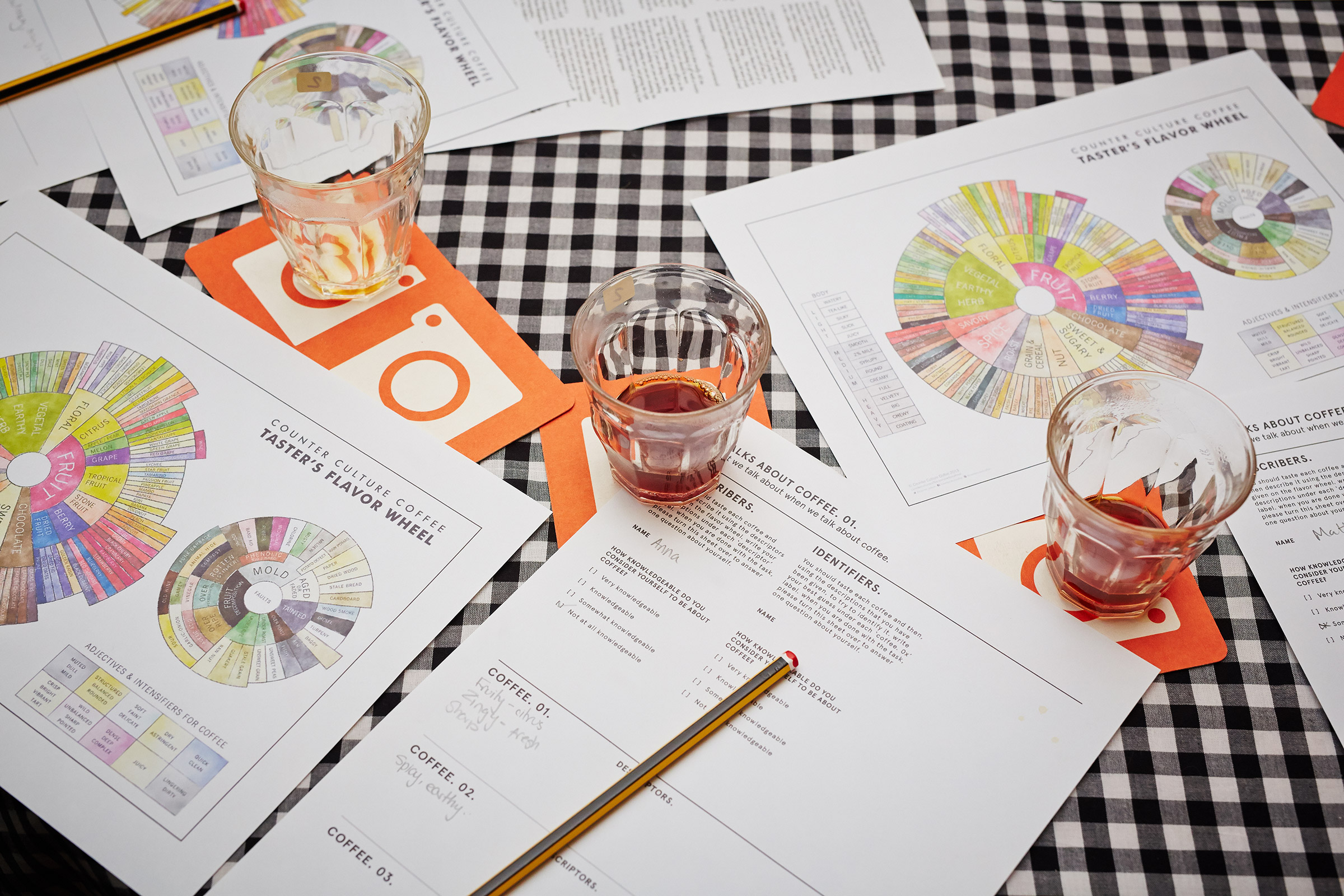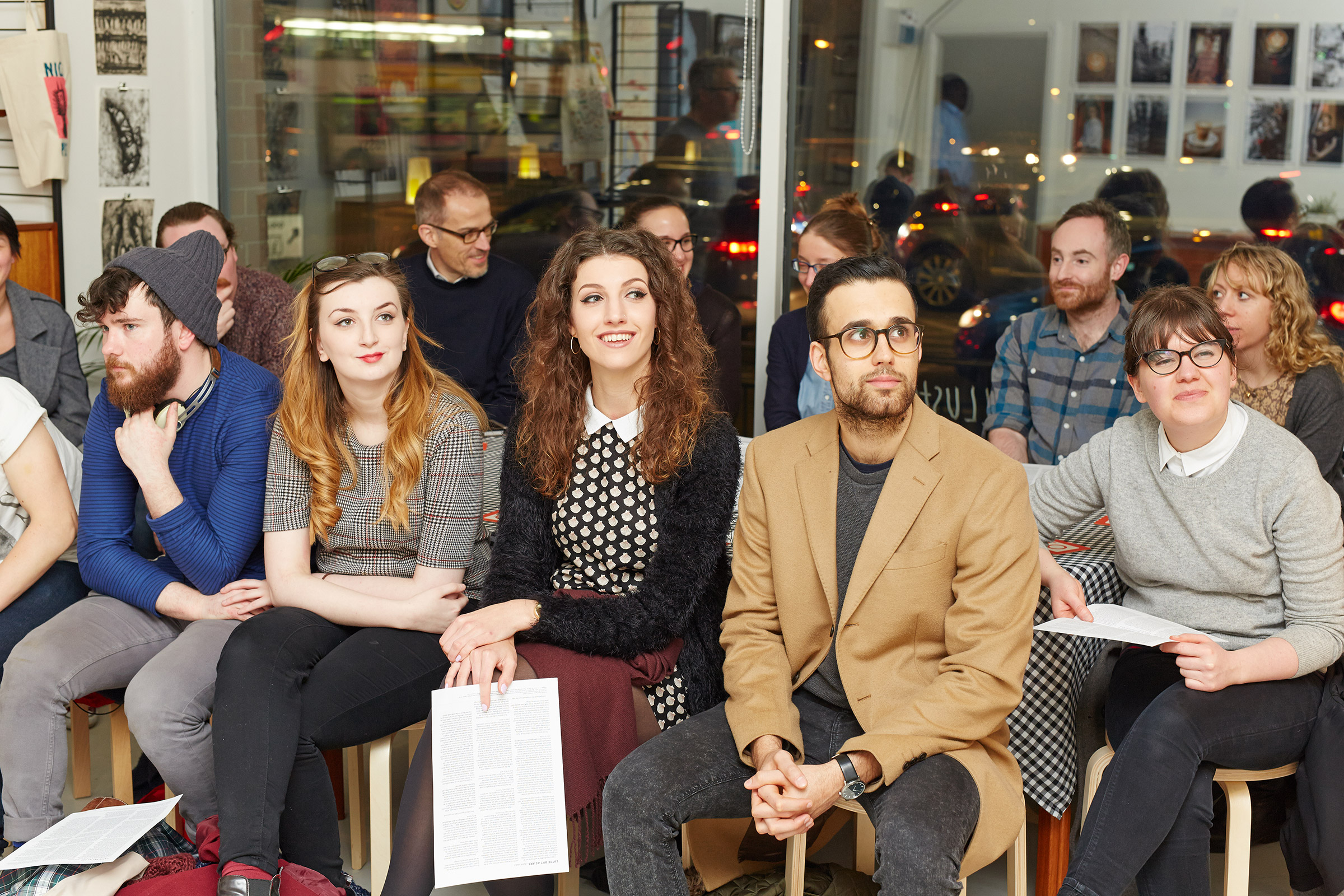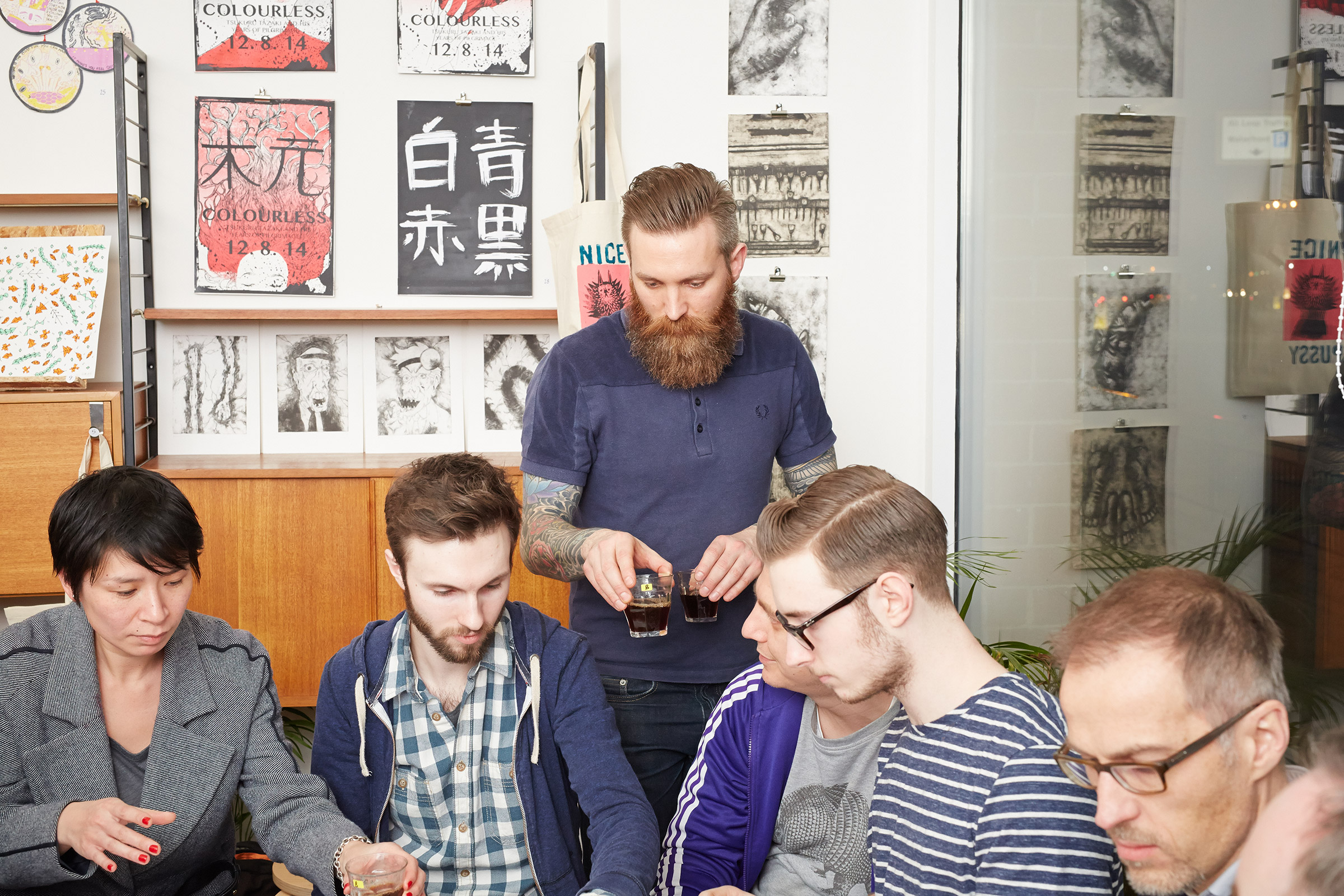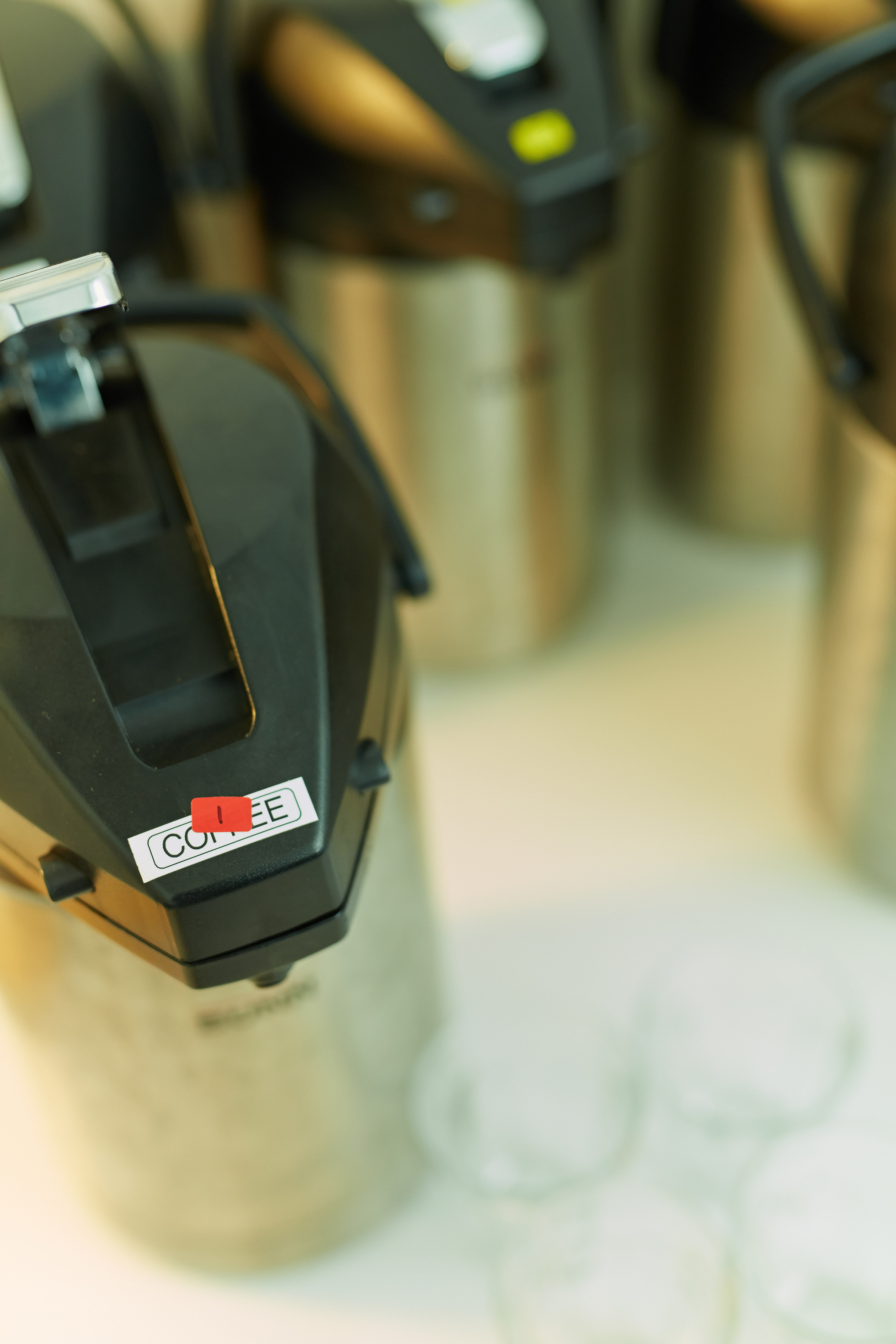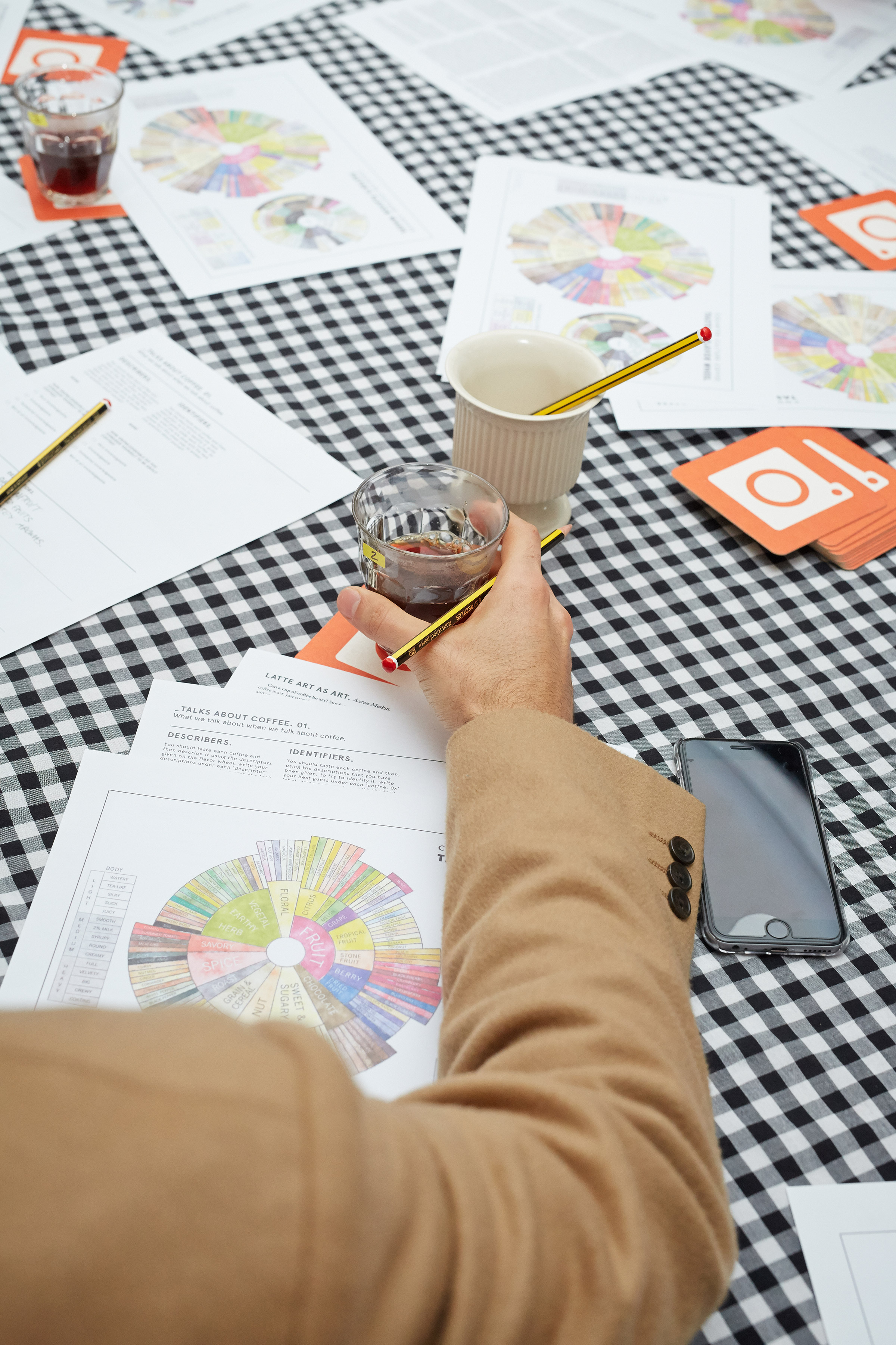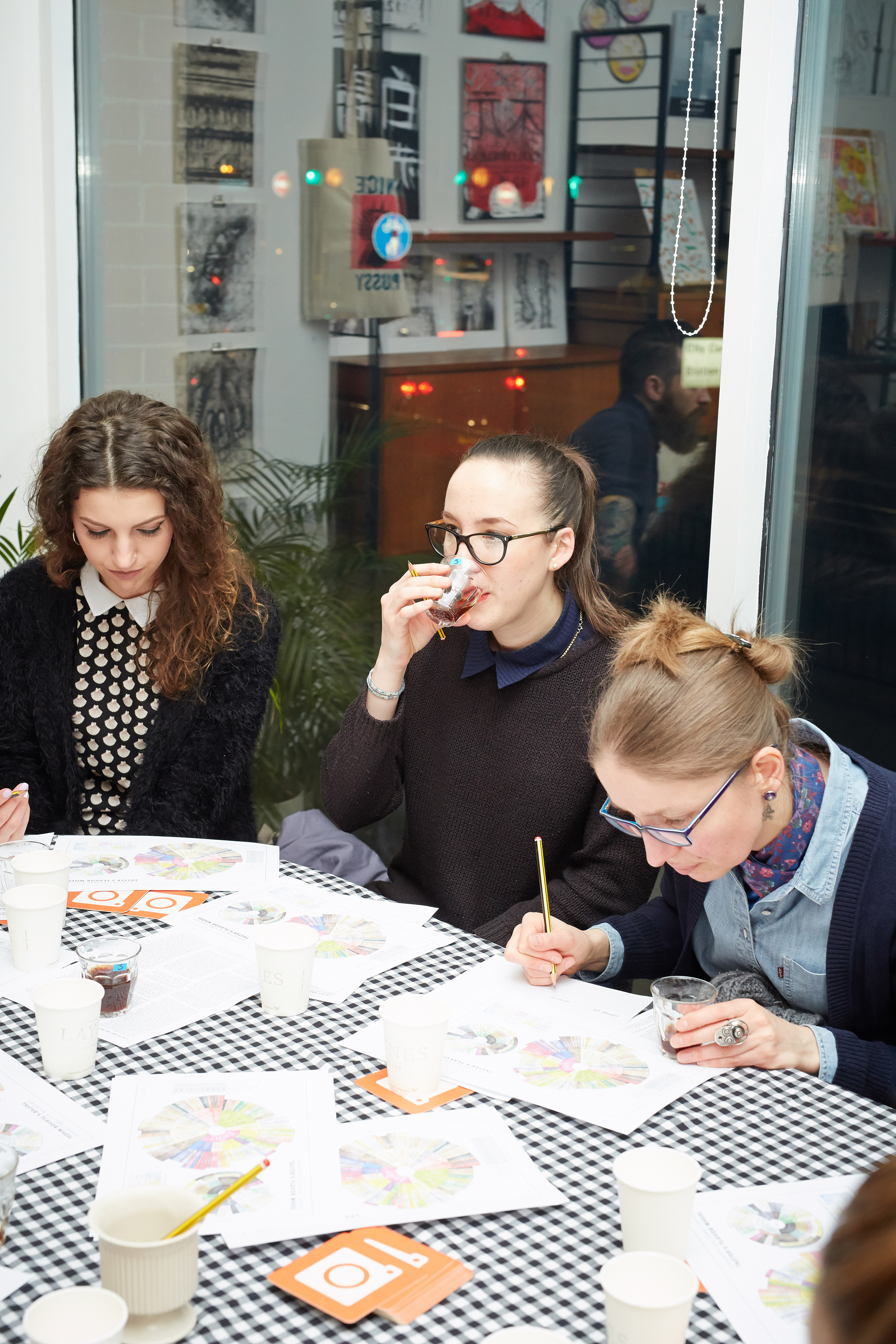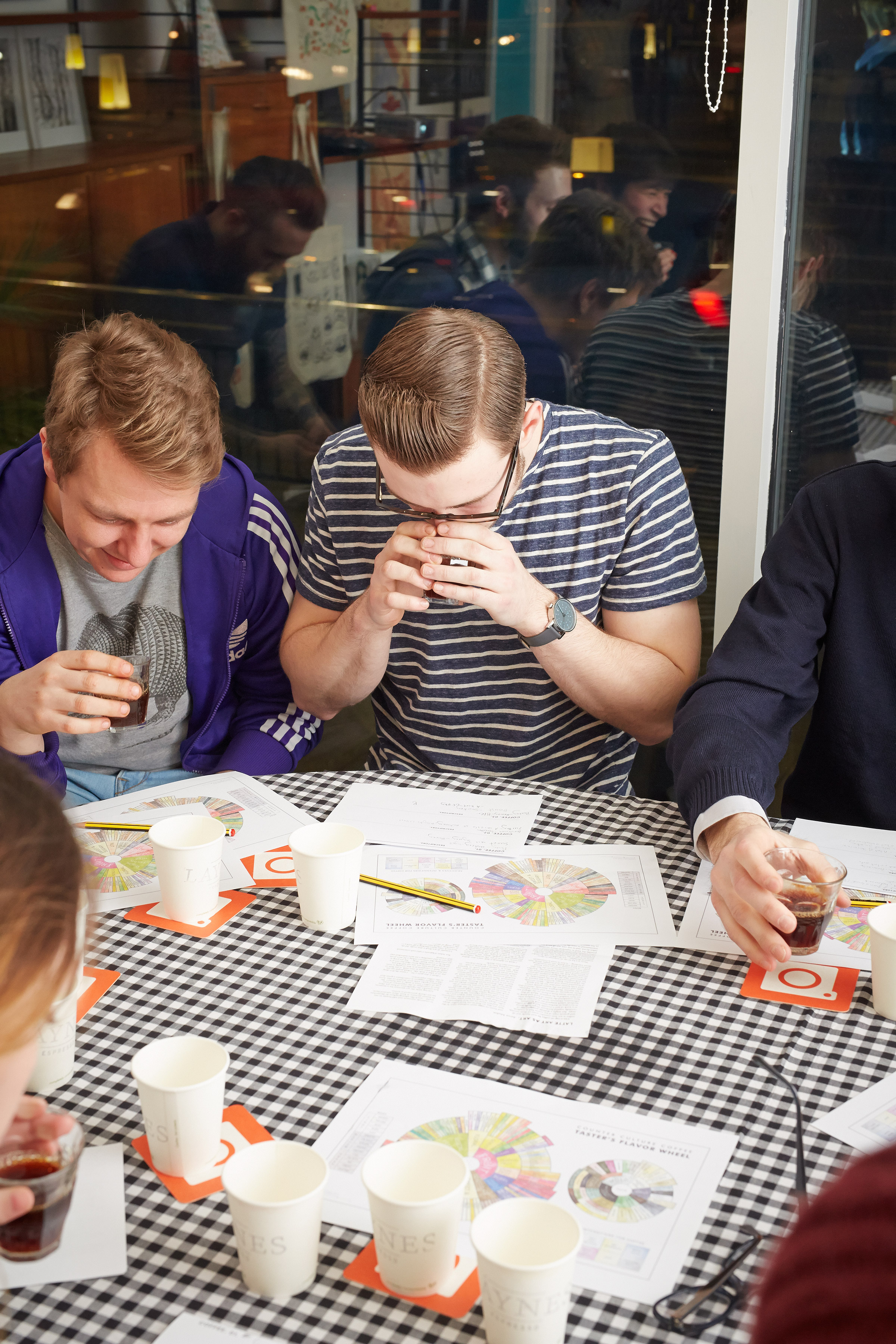Article
Experimenting with Coffee
Words by Shen-yi Liao& Aaron Meskinwith the assistance of Nicholas Watts& Amanosi EkenimohPhotography by Justin Slee
Can you know how something tastes without tasting it yourself? Does a moral flaw in a cup of coffee make it worse as a cup of coffee? These are questions that interest professional philosophers like us, but we also think they are questions that should interest coffee lovers and other foodies. Moreover, we do not think these questions can be answered with philosophizing alone; some scientific understanding of people’s experience of coffee is needed too.
With these thoughts in mind, we held two public events corresponding to the two questions, each of which involved some coffee tasting, some experimenting, and some philosophizing. These events were organized with the Food&_ team and Laynes Espresso, funded by the University of Leeds Ignite initiative, and took place at the Colours May Vary design and print shop in Leeds city centre. The stunning photos accompanying this essay were taken by Justin Slee at the first event.
In the rest of this article, we will tell you about these two events and what we have learned from them.
Communicating about Coffee
Can you know how something tastes without tasting it yourself? Some philosophers say that first-hand experience is required to judge something’s taste. But this is odd since first-hand experience isn’t required to know what colour or shape something is—you can learn that from another person. So other philosophers say that you can learn about tastes from others—although it might be difficult in ordinary circumstances. How well, then, do we communicate about taste?
We set out to explore this issue at our first coffee event, which took place in February 2015. To explore how well people communicate about the tastes of coffee, we borrowed an idea from the American linguist Adrienne Lehrer who studies wine talk. [i]
In some of Lehrer’s earliest work on the wine talk, she conducted experiments in which one member of a pair wrote descriptions for three wines belonging to the same broad class (e.g., white table wine) which the other member of the pair then tried to match. It turned out that people using these descriptions do no better than random guessing at identifying wines. In various follow-up studies, Lehrer largely confirmed this main finding—‘the results showed that one person’s matching of wines with a second person’s descriptions was not generally better than chance’ (2009: 155). This was even the case with subjects who were scientists at the Department of Viticulture and Enology at University of California at Davis.
So we wondered: would people be any better at communicating about coffee? To answer that question, we conducted an informal study as a part of this event. We divided up the people attending the event into two groups of twelve, who were given different tasks.
People in the first group (“describers”) tasted three small cups of distinct coffees. Two of the coffees came from the same farm in El Salvador using the same mix of Kenia and Bourbon beans, but were processed differently (washed vs. natural). The third coffee came from Rwanda using heirloom and Bourbon beans. The describers were given Counter Culture Coffee’s flavour wheel and a form to write down their descriptions of each cup of coffee. The describers were given five minutes to taste and describe each coffee.
People in the second group (“identifiers”) were randomly paired with the describers. That is, each identifier was given a form filled out by a describer. The identifiers then tasted the same three cups of coffee and attempted to use the descriptions they’d been given to identify the coffee tasted. In case you were wondering, all the coffee served were batch brewed by Laynes Espresso and kept at the same temperature to ensure that they tasted the same to the describers and the identifiers.
Given what we know about Lehrer’s research, we thought it would be hard for identifiers to figure out which coffees were which. Nevertheless, the results surprised us.
Not only did people do no better than random guessing at identifying coffee using descriptions, they actually did worse than random guessing. Out of twelve pairs of people at this event, none correctly identified all three cups of coffee. Indeed, only four pairs correctly identified one cup of coffee, and the remaining eight pairs failed to correctly identify any. (For comparison, if everyone simply ignored the descriptions and made random guesses, the statistically typical outcome would have been that two pairs correctly identified all three coffees, six pairs correctly identified one coffee, and four pairs failed to correctly identify any.)
We asked people what they thought of these surprising results. Dave Olejnik, the owner of Laynes Espresso, told the group that he thought one possible factor that the task difficult was that two of the three cups served came from identical mixes of beans that were only differently processed. He also suggested that if he had chosen coffees with far more distinct characteristics the identification process would have been much easier. This then led to further discussions about whether coffee communication is really as difficult as our informal study suggested.
Intriguingly, although we had recommended to people that they use the more basic descriptors in the centre of the flavour wheel (e.g., ‘floral’ or ‘earthy’) rather than the more specific descriptors on the outside (e.g., ‘burnt sugar’ or ‘dried fig’), many admitted to not following our advice. Might they have done better if they had confined themselves to simpler descriptions? And why did they not take our advice?
Others at the event suggested that maybe what makes communication so difficult is that everyone’s experience of taste is so different. This is what a philosopher might call a ‘subjectivist’ interpretation of these results. Finally, turning toward more practical matters, people discussed the relevance of these results for tasting notes that are given with coffees. If communication really about coffee really is so hard, what is the point of telling people that the coffee tastes like rhubarb or apricot?
Morality and the Taste of Coffee
Does a moral flaw in a cup of coffee make it worse as a cup of coffee? Does our knowledge of a coffee’s moral status make any difference to the way we experience its flavour? Or, to give a simple example, would a direct-trade coffee taste better than its non-direct-trade counterpart?
Again, we set out to explore this issue via an informal study at our second coffee event, which took place in March 2015. This time, we borrowed an idea from Swedish psychologist Patrik Sörqvist and his colleagues, who conducted fascinating studies on how eco-labelling changes (some) people’s perception of coffee’s taste. [ii]
Sörqvist and colleagues conducted a series of studies that used the following set up. Study participants were presented with two cups of coffee, one of which was labelled as eco-friendly and the other was unlabelled. Unbeknownst to the study participants, the two cups of coffee were identical—that is, they came from the same beans, were brewed the same way, etc. Across three studies, they found that people who generally cared more about sustainability rated the “eco-friendly” coffee as tastier. So, they concluded that even a simple piece of positive moral information, like an eco-friendliness label, can in fact lead to a more favourable experience of tasting coffee.
For our own informal study, we divided people attending this event into two groups. This time, the groups differed in the information they got about the coffee they tasted. The first group only had basic information about the coffee beans and their production:
Square Mile in London roasted the coffee beans used. The beans are a mix of Bourbon and Kenia varieties. They were produced in El Salvador and wet processed.
In contrast, the second group had the same basic information about the coffee beans, plus some morally positive information about their production:
Square Mile in London roasted the coffee beans used. The beans are a mix of Bourbon and Kenia varieties. They were produced in El Salvador and wet processed. The farm owner is very welfare conscientious: she pays the workers 50% above minimum wage and provides social services, such as medical care, for their families.
People in both groups read the information, tasted the coffee, and answered a question about how the coffee tasted to them.
The results again surprised us. Contrary to what Sörqvist and colleagues found, we didn’t find any difference between the two groups. In fact, the group that did not receive any moral information about the coffee beans thought the coffee tasted slightly better than the group that did receive the morally positive information, but a statistical test did not find this slight difference to be significant. (Both groups thought the coffee tasted above average, but not exceptional.)
Once again, we asked people what they think about these results, especially in contrast with the results of Sörqvist and colleagues’ studies. A number of interesting ideas came up. For example, one person thought many people at this event already had positive associations with Laynes Espresso, which might have led to assumptions about the moral standing of the coffee served. Perhaps this positive moral association was on their minds during tasting—even when they were not given any moral information. Other people drew on their own experiences. For example, one person made the distinction between how something tastes and the experience of tasting something, and suggested that although positive moral information can influence the experience of tasting something, it cannot change how something tastes. In other words, people attending the event philosophized about the complicated relationship between ethics and taste, using the results they played a part in generating and their own experiences.
Proving Concepts
What is the point of all this? For us, these coffee events are proofs of concepts for two ideas we care about: incorporating experimental methods into philosophy, and making philosophy relevant to everyday life. In fact, these two events show how these two ideas can go hand in hand.
Recent years have witnessed the birth of a new method of philosophy called ‘experimental philosophy’. Experimental philosophers still concern themselves with philosophical questions, but they believe that progress on answering many philosophical questions requires using the tools of the contemporary cognitive sciences. So, for example, moral philosophers have begun to use experimental methods to explore mental and neurological processes used when making moral judgments. For the last two years, the first two authors of this essay have been working on various experimental philosophy projects related to art and aesthetics. [iii]
Recent years have also witnessed a renewed interest in doing ‘public philosophy’—philosophers getting out there and engaging with the public rather than just staying inside the so-called ivory tower. We fully support this trend. But we think that typical public philosophy efforts (op-ed pieces, public lectures) suffer from some drawbacks. In the first place, they tend to be a pretty much one-way affairs (i.e., the philosopher writes or speaks, the public reads or listens). And in the second place, they tend to be largely distinct from philosophical research—the philosopher does her research first and then transmits the results of that research to the public. Neither seems ideal for getting the public to really engage with philosophical issues.
We think our coffee events show that there is another way of doing public philosophy that avoids those drawbacks. Using experimental methods might allow for a high degree of public participation and interaction. And conducting studies in public, even informal ones, might help to close the gap between research and public engagement. If we get to talk about the subtleties of coffee with other aficionados while doing all that, well, that’s a nice bonus.
For more information about the project, visit xphiaesthetics.wordpress.com and follow @xphiaesthetics.
[i] Adrienne Lehrer (2009). Wine and Conversation, 2nd edition. Oxford University Press.
[ii] Patrik Sörqvist, Daniel Hedblom, Mattias Holmgren, Andreas Haga, Linda Langeborg, Anatole Nöstl, and Jonas Kågström (2013). “Who Needs Cream and Sugar When There Is Eco-Labeling? Taste and Willingness to Pay for ‘Eco-Friendly’ Coffee.” PLoS One 8(12): e80719. doi:10.1371/journal.pone.0080719
